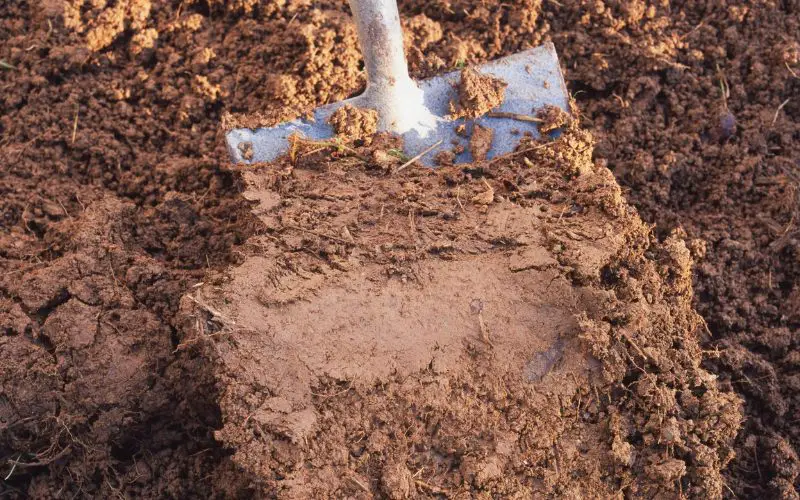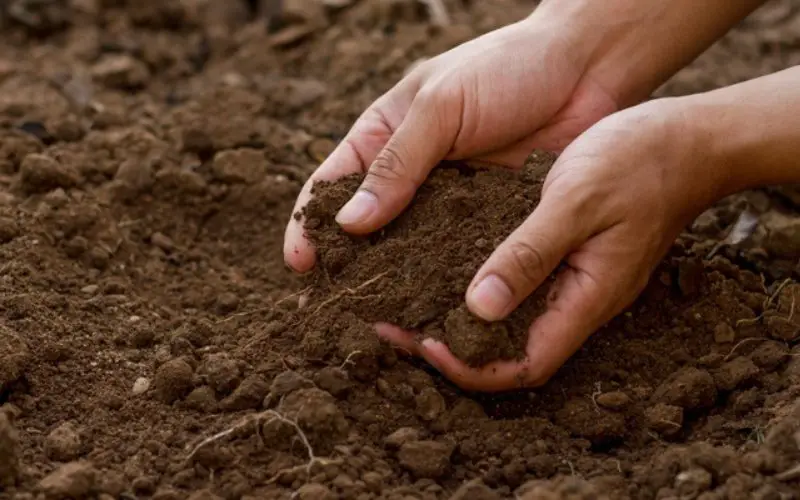If your lawn usually grows on clay soil, then you know that there are periods when the soil can get too tight and dense to grow your lawn.
Tilling is known to be the solution to this problem, but is it possible to have other options besides tilling? Many people stay away from tilling clay soil as it makes it more prone to erosion.
This guide provides seven other options for how to amend clay soil without tilling. Using one of these methods, you can improve the quality of your soil.
How to amend clay soil without tilling

Before diving into these solutions, take some time to understand the texture of your soil and its current condition. It will assist in choosing the best and most likely effective method to improve soil quality without tilling. You can consider six methods in place of tilling for your clay soil.
- Mulching with organic materials
- Dig and drop composting
- Liquid aeration
- Top layer dressing
- Planting cover crops
- Soil integration
Grass mulch
A popular and effective form of mulching for this purpose is grass mulching. It involves breaking down grasses and dumping them back on your soil. It can be achieved if you have a lawn mower with a mulching function capable of chewing and spitting back grasses to the soil.
With these grasses on your soil, they start to decompose, attracting earthworms that crawl from beneath the ground to feed on these decomposed grasses. As the earthworms crawl from beneath, they create aeration holes that achieve the same goal as tilling. This method is beneficial because the organic mulch also adds nutrients to the soil.
Enriching your soil with minimal effort is also inexpensive and straightforward.
Dig and drop composting
Another way you can attain high-quality soil without tilling is to use the dig-and-drop composting method, and the best part is that all you need is a shovel, some time, and some food leftovers. This method is excellent for fans of tilling and looking for something different yet similar.
Dig holes in the areas you wish to improve the soil, then dump the organic matter (leftover food and others) and close the hole with some soil. We recommend that you use good soil to cover the compost, and when digging the holes, dig only a little deep to prevent the compost from being affected by groundwater. We recommend that your hole should have a maximum depth of 35 centimeters. When covering the compost with soil, only partially cover it up. It is to aerate the compost and allow it to work effectively.
This method is an excellent option because it is cost-effective and allows you to put your leftover food to use, which supplies nutrients to the deeper soil layers. It is also easier to carry out than tilling, which requires significant effort. You should know that this compost does not spread to every part of your garden, it only moves sideways from its initial direction, so if you have a large garden, you must create multiple holes to supply nutrients to the entire soil.
Liquid aeration
The goal of tilling is to aerate the soil so that the roots of plants get the amount of oxygen they need, and since clay soil is very dense, achieving aeration is difficult. Liquid aeration aims to moisten the soil to make it easy for aerators to do their job, and this is done by mixing water with a solution and spraying it on your soil.
Some liquid aeration products contain ammonium laureth sulfate, a chemical that can also be found in washing agents like liquid soaps and shampoos. They help loosen the compact clay soil for proper aeration. We recommend pairing this solution with another for better results regarding improved soil quality.
Top layer dressing
This method is similar to the grass mulch method. The only difference is that organic compost, like food leftovers and other organic matter that can be sourced from plants and animals, is used. Spreading this organic matter on the top layer of your soil allows you to add nutrients to the soil, but unlike digging and composting, the nutrients are only distributed to the top layer of the soil.
We recommend pairing this solution with something else for improved soil quality. Depending on this method alone will prove an unimpressive result.
Planting cover crops
Planting cover crops on your clay soil is one great way to improve soil quality. That will be even better if you go for nitrogen-fixing cover crops with deep roots like legumes. These plants acquire nitrogen, an essential mineral for soil, by interacting with air and bacteria. Their deep roots will help supply the deep layers of the soil with these nutrients.
These cover crops also aerate your clay soil by their deep roots running through it and their plants growing beneath the ground. You can choose to plant fall or summer cover crops, but this depends on your region’s climate. We recommend planting cover crops that suit the climate of your region. This way, they don’t get damaged by harsh weather conditions.
Soil integration
Choosing this method enables proper soil aeration and drainage. It works by drilling multiple holes in the soil only a few inches wide and then filling them with organic matter to spread nutrients throughout the soil. You can drill in deeper to tackle more soil depth and reduce compactness.
It is one of the most effective substitutes for tilling. However, it requires more time and effort to achieve, but the results will be worth it.
Conclusion
Clay soil can compact easily, and many people rely on tilling to solve this. But if you don’t have a tiller or are aware of the adverse effects of tilling and need alternatives, after reading this article, you should be able to employ one or two methods to improve the quality of your clay soil.
Helpful Links:
- When to Apply Ironite to Shrubs?
- What Pots Are Good For Succulents?
- Top 3 Best Bagged Soil For Vegetable Garden
- How to Make Homemade Compost Catalyst
- What is a Good Source of Carbon for Compost
You can amend your clay soil without tilling by soil integration, planting cover crops, grass mulching, digging and composting, top layer dressing, and liquid aeration. However, you should know that some methods will provide dull results.
Kindly reach out to people by sharing this post on social media.
If you liked this article, then please follow us on Facebook, Instagram, Twitter, and Pinterest.

